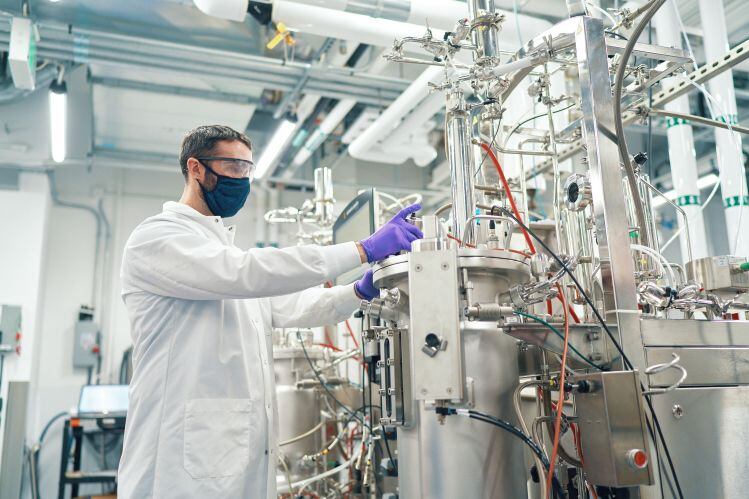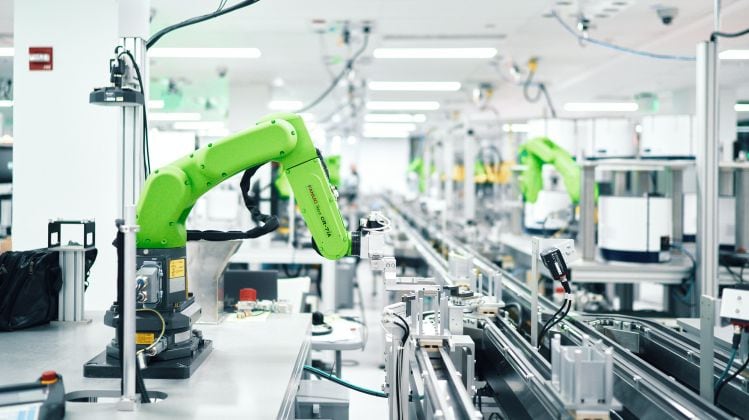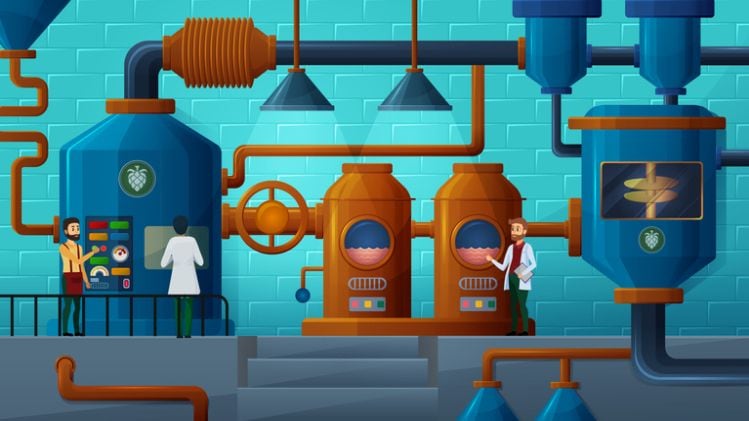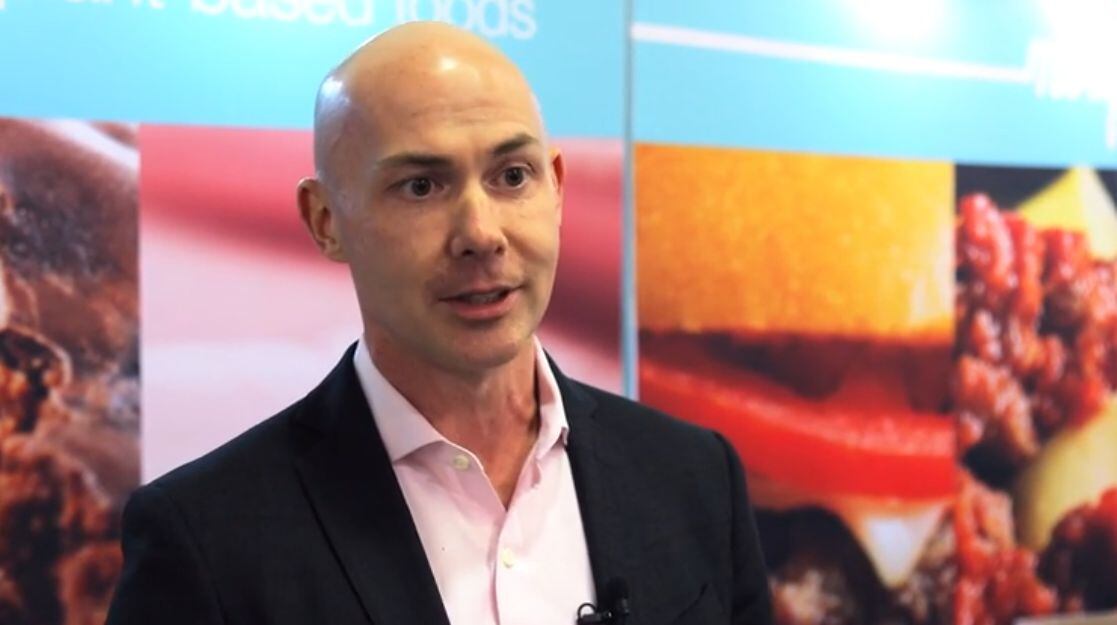Right now, we’re just scratching the surface when it comes to the potential applications of synthetic biology in the food industry, says Boyle (twitter tagline: ‘I was a synthetic biologist before it was cool’) who joined Ginkgo in 2012, and spent the next decade showing that “biology is programmable… all living things are programmed by DNA. What we do is read that code and write it.”
In a nutshell, Ginkgo is sequencing the genetic code (strings of DNA, like a computer code) that instructs plants and animals to produce any given substance (eg. Reb M or myoglobin) and then synthesizing DNA (effectively writing a computer program) that will instruct another organism, such as a yeast cell, to express the same substance.
Synthetic biology in food production
To those wondering whether this sounds like a bad sci-fi movie, rather than something that could make our food system better, Boyle says the ability to program biology could have myriad applications at every level of the food supply chain, and doesn't mean '70s-style space food.
For example, if you can use synthetic biology to re-tool the DNA of bacteria in soil so plants can more effectively convert nitrogen from the air into food, he says, you could eliminate the need for synthetic nitrogen fertilizer, a major contributor to greenhouse gas emissions.
Similarly, if you can engineer microbes to produce flavors that are found in plants, but are routinely synthesized from petrochemicals because we can't grow enough plants to meet demand (the vast majority of vanillin, for example, is synthetic) we can reduce our reliance on oil.
Microbes can also be programmed to produce substances made by animals. An oft-quoted example is chymosin, an enzyme used in cheese making that’s now routinely made by genetically engineered microbes, but was historically sourced from calf stomachs.
Other examples include making whey and casein proteins via microbes rather than cows, and egg proteins via yeast instead of chickens, which proponents argue is more sustainable and ethical than industrialized animal agriculture.
In another scenario, says Boyle, synthetic biology could advance sugar reduction strategies or healthcare goals by enabling the commercial production of sweet proteins or rare cannabinoids found in such trace levels in nature that it is unsustainable, or simply prohibitively expensive, to extract them from plants.
How is Ginkgo Bioworks working with the food industry?
So how is Ginkgo – which has already launched one spinoff company, Motif FoodWorks, focusing on meat and dairy alternatives – engaging with the broader food and health industry?
Ginkgo has established some high-profile partnerships with flavors & fragrances giant Givaudan, cannabinoid specialist Cronos Group, and Bayer (to create JV Joyn Bio, which is engineering nitrogen-fixing microbes to reduce reliance on nitrogen fertilizer), says Boyle.
But it has also launched a cell development kit (CDK) service, which gives developers access to the toolkit needed to develop commercial proteins, including pre-engineered host cells optimized for protein production, specialized kit, automation capabilities, genetic engineering expertise, insights garnered from Ginkgo's codebase and the applicable infrastructure to design, build and test a custom microbe.
“Our primary mission is to make biology easier to engineer,” says Boyle. “We've really focused on software and automation, so synthetic biology is more accessible.
“A lot of companies are trying to use the same microbial strains, but not all pichia [a yeast widely used in food production] is created equally. So with our pichia cell development kit, we’ve been able to produce mammalian proteins at around 30 grams per liter, which is very high for pichia. You can’t pick any old pichia off the shelf and be able to hit 30 grams per liter.
“This is a new market area we're trying to open up. Companies are realizing that their IP is really product oriented, they don’t need to be good at engineering microbe as well.”
‘Fungi are pretty amazing… but they're traditionally difficult to engineer’
As to which microbes Ginkgo is working with, the most appropriate host for any given substance will vary, says Boyle, so yeast might be ideal for expressing some proteins, and filamentous fungi for others.
“Last year, we acquired a company in the Netherlands called Dutch DNA Biotech, and their sole focus is developing better filamentous fungal hosts for producing protein that was driven by recognition that the kind of aggressive cost targets folks are pursuing in the industry really demand higher quality of microbial hosts that can reach extremely high titers," he explains.
“Fungi are pretty amazing, there are processes that produce protein from fungi at 100, 120 grams per liter, but they're traditionally difficult to engineer.”
Cell-free bio-manufacturing
The ‘cell-free’ bio-manufacturing space – utilizing the biological machinery inside of cells to produce colors and flavors, for example – is also “really exciting,” says Boyle, “although the name ‘cell free’ is a bit of a misnomer because you still use cells to produce the raw materials [such as enzymes] to make your product [in the first place].”
“We'll be paying close attention to this as it gets proven out at larger scale.”

Can you replicate the complexity of plant extracts or animal products with synthetic biology?
One issue that is beginning to generate more debate as synthetic biology gains traction in food, is whether you can match the incredible complexity of plant extracts or animal products using precision fermentation, and to what extent this matters, from a nutritional or sensory perspective.
Take vanilla. The predominant flavor component in vanilla pods is vanillin, which can be produced by genetically engineered yeast. But can you use microbes to create all the other chemicals that contribute the complex smoky, spicy, botanical, sulfury, sweet and creamy notes you get from the plant?
Similarly, while several companies are bio-synthesizing individual animal proteins such as albumin, beta-lactoglobin, or certain human milk oligosaccharides, they are not, yet at least, even close to replicating the complexity of eggs, dairy milk or human breastmilk (egg white alone contains hundreds of proteins).
While the above is true, concedes Boyle, it depends on what you want to achieve. Food companies, for example, may not necessarily need or want to re-produce every single molecule in a given plant or animal source, but only the ones that provide characterizing flavor or key functional or nutritional properties.
Similarly, there is no reason why animal-derived eggs, beef, and dairy milk that are ubiquitous today should serve as nutritional or sensory benchmarks tomorrow.
“People see these recombinant proteins as building blocks… but where I think we’re going next is moving from replicating experiences to creating new ones.”
Is synthetic biology taking the food industry in fundamentally the wrong direction?
While some commentators worry that synthetic biology – dubbed by some critics as ‘GM 2.0’ – is taking the food industry in the wrong direction, meanwhile, Boyle says that wherever you stand on the technology, it is prompting more nuanced conversations about the environmental impact of food production, spanning everything from sweeteners to egg whites.
“At least we’re now having a conversation about which approaches are more sustainable and why.”

Contract fermentation capacity bottleneck
But what about the elephant in the room, the fact that demand for contract fermentation capacity currently far exceeds supply?
It’s a challenge, says Boyle, “but the petrochemical industry wasn't built overnight either. Investing billions of dollars in petrochemical infrastructure was seen as a safe investment once the technology was proven at scale, so I think you'll see that with fermentation capacity as well.”
The circular economy
As the technology gains traction, meanwhile, more attention must also be paid to the source of feedstocks for industrial scale fermentation facilities in order to create a more circular economy, he says.
“I think there's a lot of opportunity around this. But this is also how agriculture has worked forever, right? How many foods that we eat today initially started as a waste stream or a byproduct of another process? So, we see a lot of opportunities in this space.”




